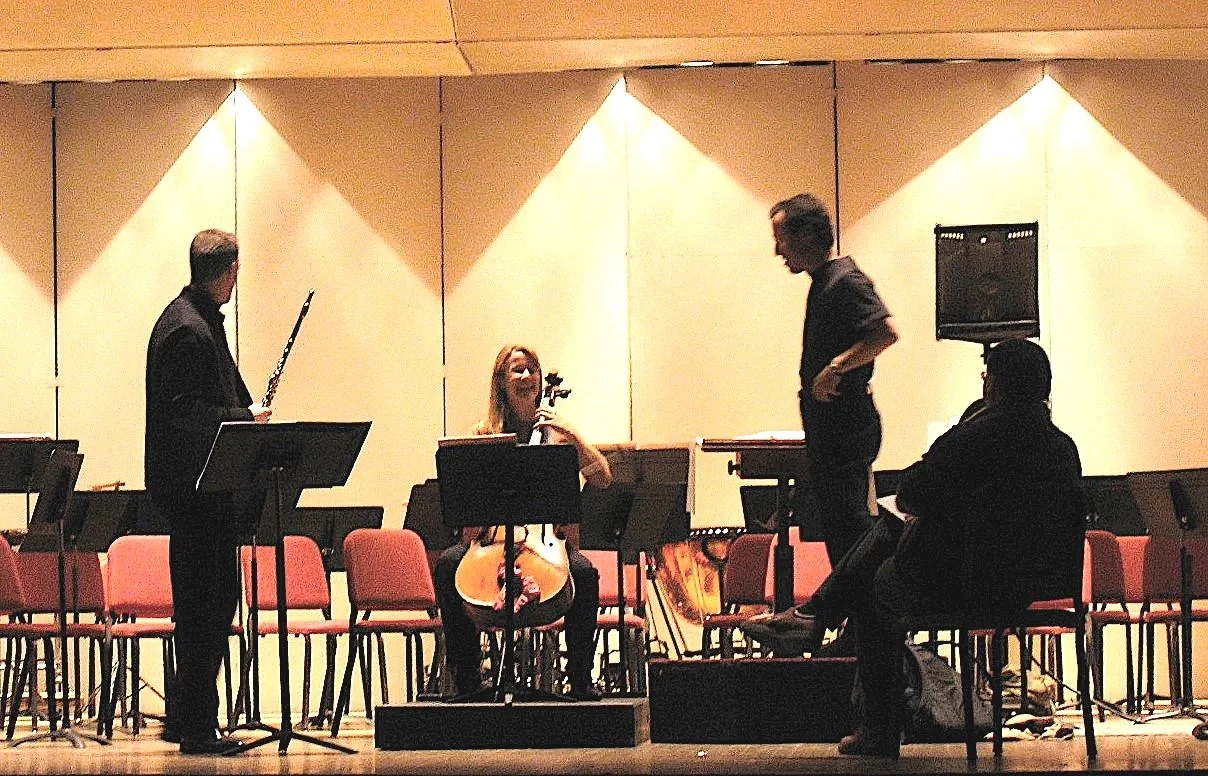Romeo and Juliet (2005)
Double Concerto for Flute, Violoncello, and Orchestra
solo flute, solo cello; 2.2.2.2 / 2.2.2.1 / timp.3perc / pf / strings
Rehearsal reduction for piano available.
Duration: 28’
Movement Titles: Movement I (9:47) | Movement II (7:10) | Movement III (12:36)
First Performance: 16 January 2005 / Palace Theater, Albany, New York / Jeffrey Khaner, flute; Sara Sant'Ambrogio, cello / The Albany Symphony Orchestra / David Alan Miller
Dedication: “Commissioned by the Albany Symphony Orchestra for the Capital Region Heritage Project, 2003.”
Publisher: Peermusic Classical
Program Note:
The very young lovers in Shakespeare’s play inspired the character of the soloists’ interaction with one another and with the world at large — in this case, the orchestra.
Although the sequence of emotional states during the course of the concerto as a whole corresponds to the general shape of the play, it is not a piece of program music or an opera. Rather, it is a meditation on the mystery of love, abstract in its particulars, as music must be, which lets music express what perhaps cannot be truly conveyed by other means — especially words.
While the classic concerto paradigm is one of competing soloists and their associated sound worlds, the soloists in this piece aren’t competing with one another or the orchestra, they are striving to join together harmoniously in a discordant world.
There are two primary tonal centers, which correspond to the two lovers: the flute soloist’s home key is E major, and the cello soloist’s home key is B flat major. Between these two homes exists an “imperfect” larger world that consists of a combination of the two keys into an artificial scale (A – B flat – C sharp – D – E flat – F sharp – G). Naturally, the relative minor keys of the lovers (C sharp minor, and G minor) figure prominently as well.
Jeffrey Khaner.
Sara Sant’Ambrogio.
Jeff Khaner, Sara Sant’Ambrogio, David Alan Miller, and DH, 14 January 2005. p/c: Gilda Lyons



